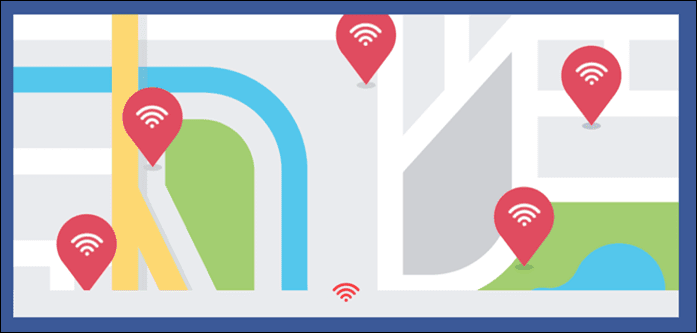In this post today, we will be exploring a few nifty ways to find the MAC, IP and DNS Addresses on Windows 10 systems.
1. IP Address
What Is an IP Address
An Internet Protocol address (IP address) is a unique identifier in the form of a numerical label for your system when it connects to a computer network. It’s a string of numbers and separated by periods. Every device connected to a network has one such address assigned. These addresses bear the location details of both the sender and receiver on a network, just like parcels. Every computer gets a different IP address whenever connecting to the internet or locally on your LAN or Wi-Fi network. So, if you do notice something fishy you can seek the help of IP lookup tools to check for the origin and other related details. There’s more to IP addresses such as different types of addresses (Static, Dynamic, Private) and different versions (IPv4 and IPv6). Thankfully, finding out the IP address of your computer isn’t rocket science. You can find it either through Command Prompt or the Settings.
How to Find IP Address Through Command Prompt
Hit the Windows Key+R keys to open the Run window and type cmd to open the Command Prompt. Type the following command as shown in the screenshot below. You’ll see one or two blocks depending on the network your computer is connected (Ethernet and Wi-Fi). You’ll see a single block if the computer connects to either Wi-Fi or Ethernet. The address displayed next to the IPv4 address is your IP address.
How to Find IP Address Through Settings
Head over to Settings (Windows key + I) and click on Network & Internet. Once in, select Wi-Fi from the left menu (or Ethernet if you are connected via LAN). Now, click on Hardware Properties. Your system’s IP address will appear next to IPv4 label.
2. MAC Address
What Is a MAC Address
Media Access Control (MAC) address are unique addresses for each device that can connect to a network. Unlike IP address, which keeps changing on connecting to different networks, MAC address is permanent. And it represents physical address of your system, be it a PC, laptop or any device that connects to a network. One of the primary uses of MAC address is identifying the other connected devices in the network, using which you can block devices from your home/office WiFi network. Aside from the above method, there are two other methods, to find out MAC address.
How to Find MAC Address Through PowerShell
Alternatively, you can use Windows Powershell to fetch the said address. Open PowerShell and enter the following command: Unlike Command Prompt, this doesn’t fetch every minute detail. Instead, it gets you the basic network information including Bluetooth network connection, Ethernet and Wi-Fi.
How to Find MAC Address Through Settings
Alternatively, you may click on the Wi-Fi icon on your PC’s taskbar > Properties. That will take you the profile of that network. Scroll down, and you’ll be able to see the MAC address.
3. DNS Address
What Is a DNS Address
DNS or Domain Name System helps in managing and mapping the IP addresses of all the websites. You can equate it with a phone directory. So, when you request for a particular site from your browser, the name is checked on the DNS server which in turn relays the IP address to your browser. It’s worth to be noted that different DNS servers take a varying amount of time to reply, and it could impact your browsing speed.
How to Find DNS Address Through Command Prompt
Both Command Prompt and PowerShell can be used to find the DNS address to which your PC is connected. If you prefer to use Command Prompt, start by typing the following command:
How to Find DNS Address Through Control Panel
You can also find the DNS address via the Control Panel. Go to Settings and select Network & Internet. Click on Wi-Fi (or Ethernet) and scroll down until you see Network and Sharing Center. Once in, click on the network name, and then on Details. The value next to IPv4 DNS Server is your system’s DNS address.
That’s a Wrap!
So, this is how you can find the IP address, MAC address, and DNS server. Knowing the respective commands to find out the exact details about either of them will help you save time. Also, you can easily use those addresses to troubleshoot any connectivity woes or strengthen your network’s security. Did you know that there’s a way to find out which DNS is fastest for you? If no, don’t forget to check out the next post. The above article may contain affiliate links which help support Guiding Tech. However, it does not affect our editorial integrity. The content remains unbiased and authentic.





















